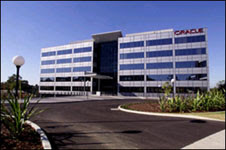I saw this headline recently in a 2003 article from Mining Journal and I thought it was great, "Some years, 12 months can seem like long time." (You may well ask why I was reading 6 year old back issues of Mining Journal but I'm sure you've all been in a dentists waiting room). Some years 12 months can indeed seem like a long time... but not this one, well, not for me anyway.
I really enjoyed reading this article from my friend Chris Duckett - OK, so I follow him on twitter, that means I can say he's my friend doesn't it? - on the Oracle/BEA acquisition 12 months on.
We get so caught up in the 'what if's?' in our industry that it's really good to take time out and look back at the 'what happeneds'. 12 months ago we were full of what if? Two major middleware product sets were coming together, what would survive and what would perish? And what did perish actually mean? Would Oracle force a BEA customer to move to an Oracle product? How would BEA products be supported? What would the future product strategy look like?
My summary is that the reality of the acquisition was nowhere near as doom-laden with grave concerns some had predicted. There were no forced migrations, in fact products that didn't make it front and centre into the plans for the future are still being enhanced and supported, as Derrick Wheeler says in Chris's piece, "We were concerned about WebLogic Integration a little bit as to where that would fit... We've since been assured that we can purchase more licences and that we'll be supported — at least five years developed, another five years supported — that makes us feel more comfortable."
There were decisions about the product roadmap that needed to be taken, as Cameron Tuesly from Integral Technology Services says in the article, "There was a few overlapping products, I have to say that I thought Oracle did a pretty good job of clarifying early on where they were going... I think they picked the right products, where there were two products they seemed to have picked the stronger one rather than the incumbent."
And there is some evidence that the whole is greater than the sum of its parts in these acquisitions, a sort of 2 + 2 = 5, in that the organisation is able to turn its big brains loose on new and innovative ways to combine some of the products together. Case in point here is the WebLogic Application Grid. Oracle had Coherence, BEA had JRockit... to use a catchphrase, "Will it blend?" Well, turns out they blended very well - without the dust, smoke and general destruction that our good friends at Blendtec will show you if you click on that last link.
Coherence is a highly clustered, highly fault tolerant in memory data cache, JRockit is the fastest Java Virtual Machine in the world. Mix them together, add some management and operations control and you have the WebLogic Application Grid, bringing maximum performance, scalability, predictability and reliability on commodity hardware to Java applications.
So good on you Chris for taking a moment to reflect and examine what actually happened. I liked this quote from Chris Muir as I imagine a future 12 months from now, "... they are accumulating some of the best products in the world". That sounds good to me, working with some of the best products in the world.
-sean
The Oracle Australia and New Zealand Middleware and Technology Blog.
Subscribe to:
Post Comments (Atom)


No comments:
Post a Comment